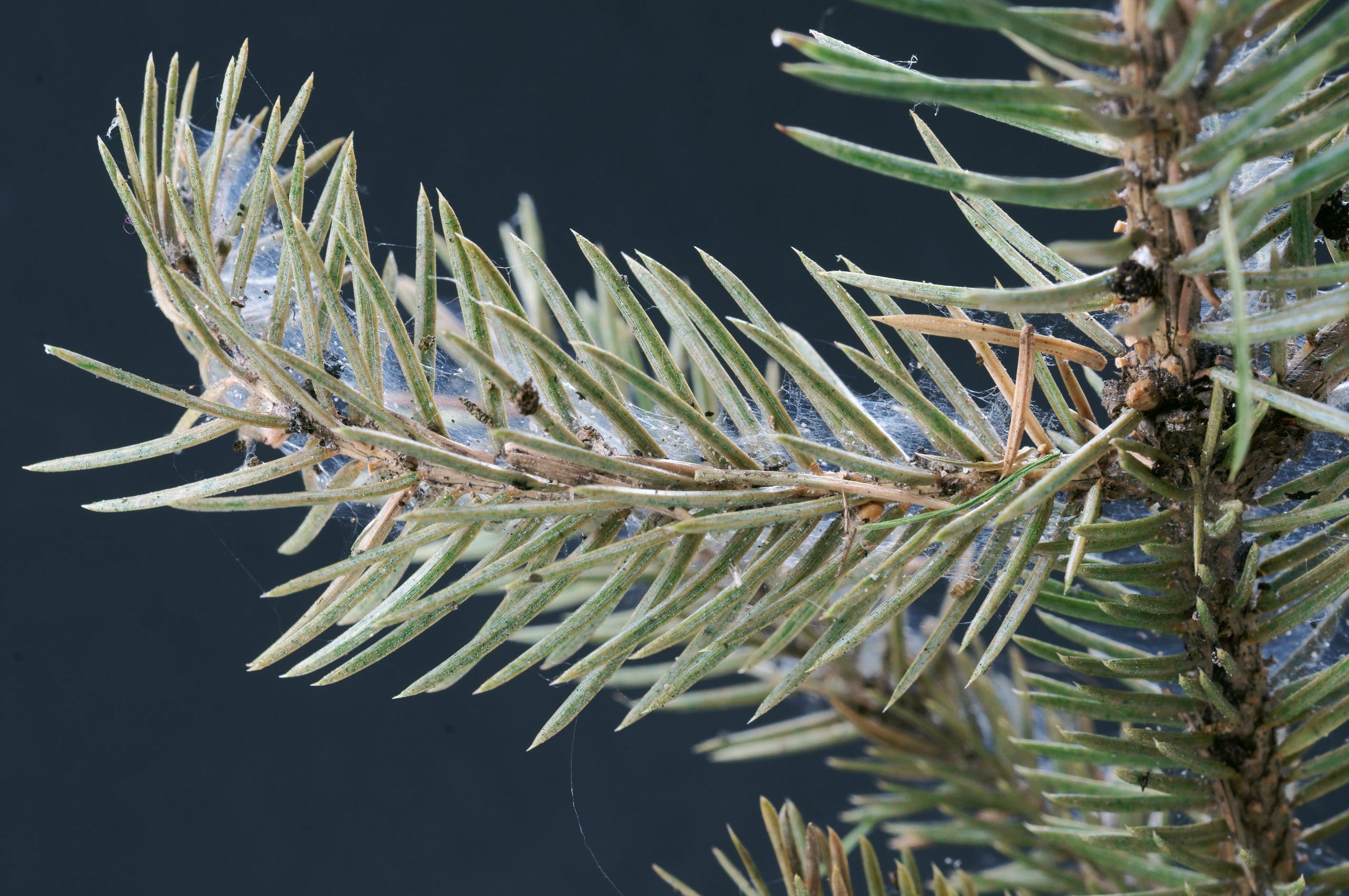
With winter right around the corner, it can be easy for your clients to be lulled in a false sense of security with insects out of sight and out of mind.
However, the pests must overwinter somewhere, and many can settle down in dormant trees. While adult insects ride out the colder months, winter can be a prime time to treat these infestations and get the populations under control, as many lay eggs that will be ready to hatch in the spring or summer.
Aphids
Also known as plant lice, aphids can be quite a nuisance by eating the sap of the tree, depriving them of nutrients. If a large enough population feeds for an extended period, they can cause wilting and even dieback of buds. Aphids excrete honeydew, a sticky fluid that can attract other insects and grow sooty mold.
Aphids lay eggs in trees that are dormant during the winter months. Horticultural oils can be used to kill these eggs by smothering them.
Spider Mites
Spider mites are extremely small, making infestations hard to spot until it is too late. They feed on sap and cause leaf damage. After a severe infestation, leaves can become discolored. Spider mites can’t kill a large tree by their feeding alone, but they can carry various tree diseases.
These insects will tuck themselves away in bark cracks. Because they have a number of natural predators, spider mites don’t tend to require significant control. Sprays of water, insecticidal oils or soaps can be used for management.
Scale
There are numerous species of scale insects with soft and armored types. Scale infestations can go unnoticed until they begin to cause significant damage as they appear as small bumps rather than insects. These insects suck out fluids and also produce honeydew, like aphids.
Scale can overwinter as adult females or as eggs. Apply horticultural oil in the winter at dormant season rates to the bark and crotches of the plants where the scales shelter. Use enough oil to reach behind loose bark and into cracks and crevices.
Lace Bugs
Both adult and immature lace bugs feed on the undersides of the leaves of deciduous trees. They can discolor leaves but don’t tend to affect the health of woody plants. Heavy feeding can result in premature leave drop. If feeding happens for several consecutive years, plant growth can be reduced. Lace bugs are another insect that lays eggs on trees over the winter. After the eggs hatch in the spring, the most damage occurs.
Prior to initiating a chemical control program, look for lace bug predators and evidence of parasitized lace bug eggs on infested plants. When predators and parasites are present in the landscape, they can often help keep lace bug populations at acceptable levels. Insecticidal soaps or horticultural oils are effective at controlling lace bug populations.
Tips for Success
When applying dormant oils, they should be applied on a clear, non-windy day in the 50 to 70°F temperature range. Only apply oil if the temperature will remain above freezing, ideally above 40°F, for 24 hours after application. They should not be sprayed 48 hours before or after a freeze occurs or is predicted.
Spraying with oil at a dormant concentration after bud break when leaves have emerged may kill the young leaves, so the correct rate must be used at the appropriate time of year.
Be mindful that certain trees like junipers, cedars, redbuds and spruce are sensitive to dormant oil sprays. Test a small portion of the infested plant prior to spraying the entire tree.

